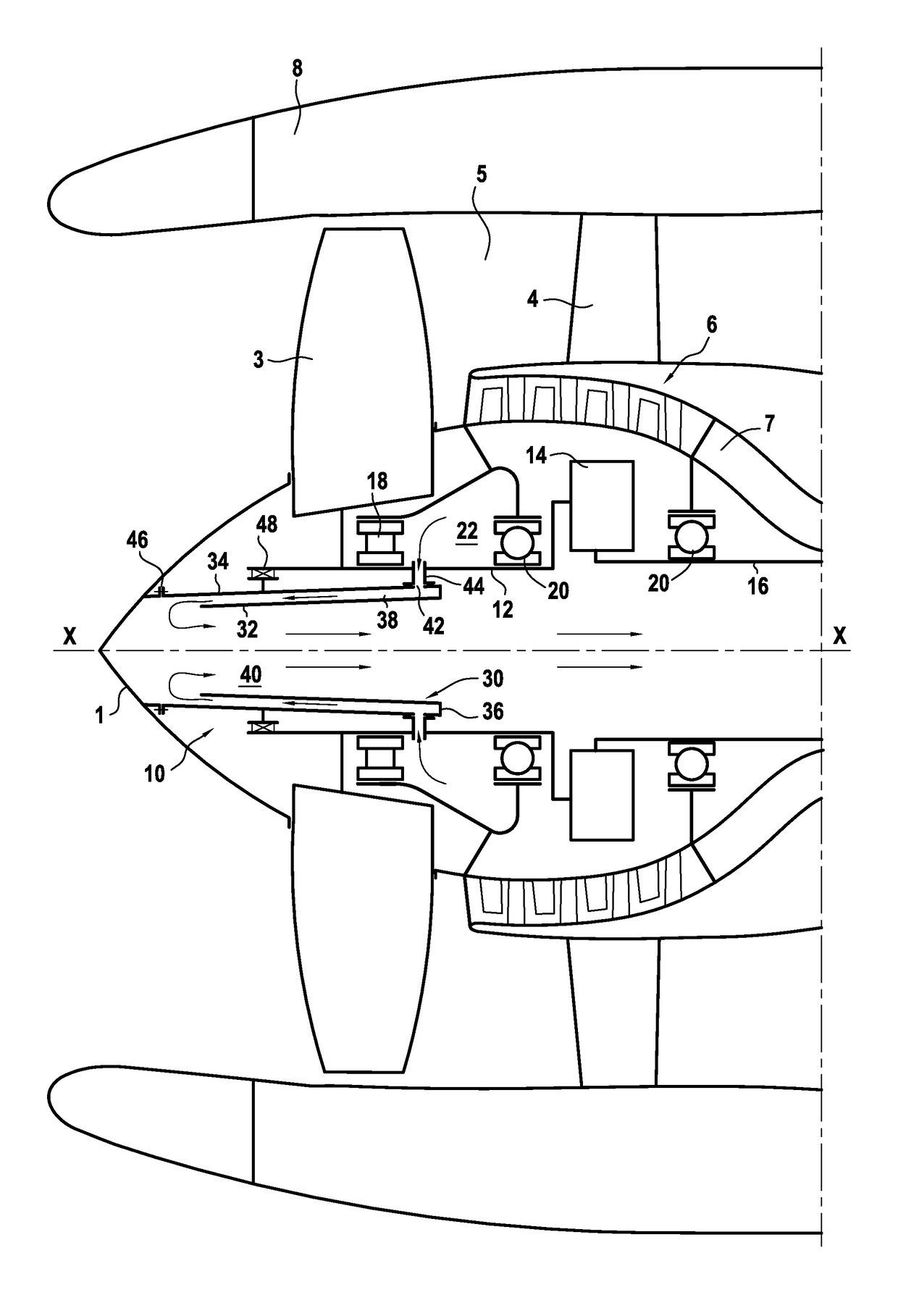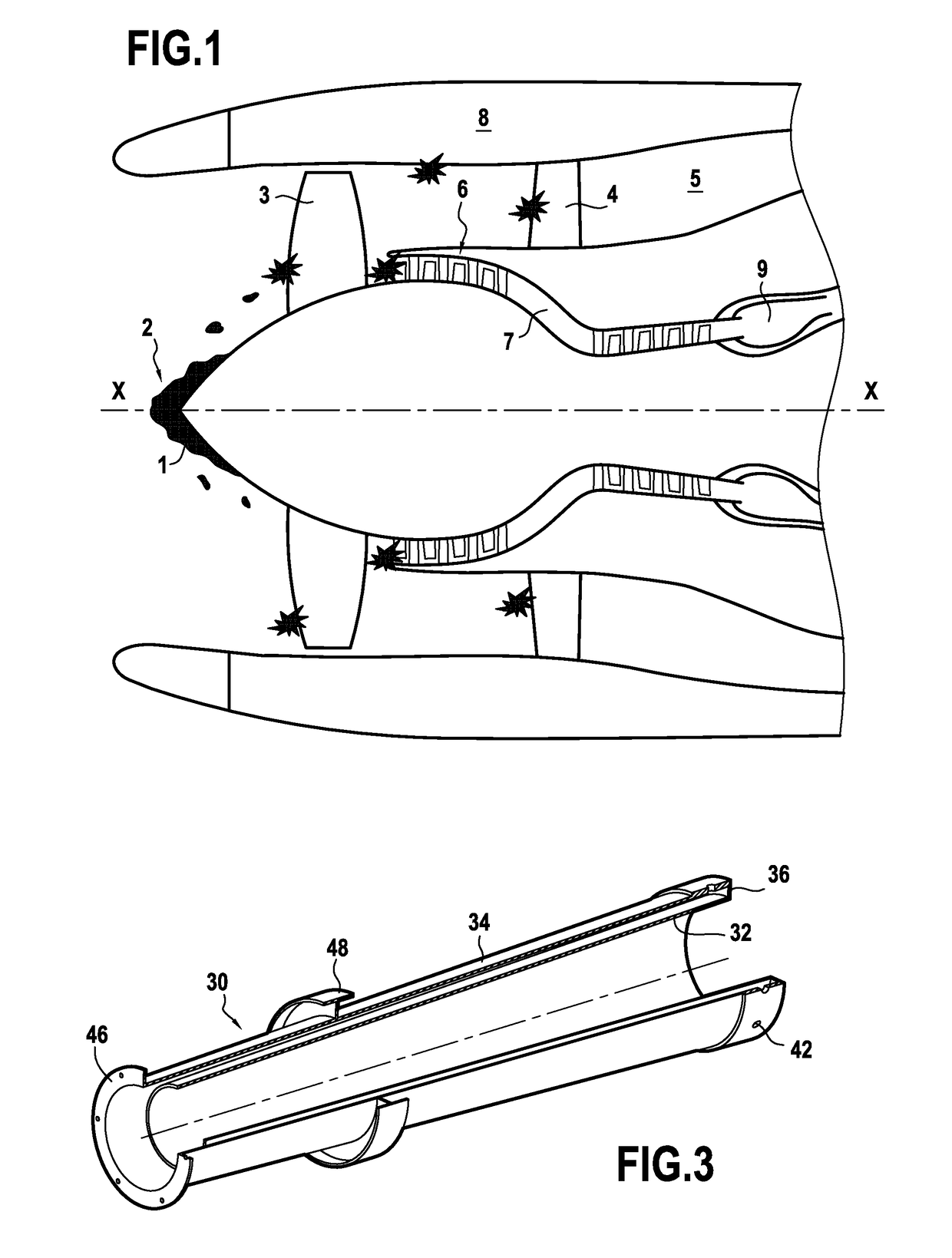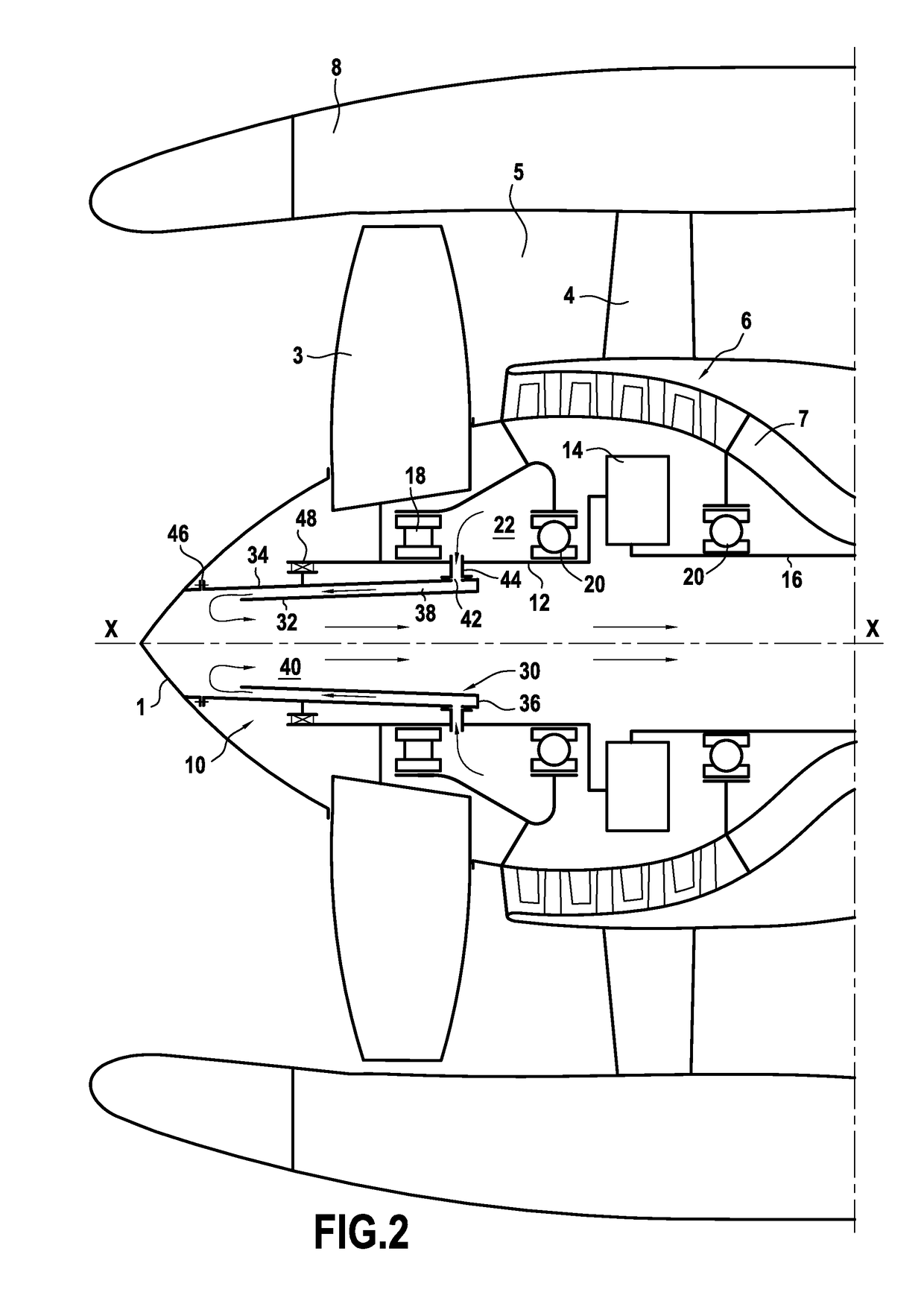Turbine engine fan module including a turbine engine inlet cone de-icing system, and a de-icing method
a turbine engine and fan module technology, applied in the field of aviation turbine engines, can solve the problems of affecting the performance and reliability affecting the operation of the turbine engine, and presenting certain drawbacks
- Summary
- Abstract
- Description
- Claims
- Application Information
AI Technical Summary
Benefits of technology
Problems solved by technology
Method used
Image
Examples
Embodiment Construction
[0033]With reference to FIG. 2, an upstream portion of an aviation turbine engine with a ducted fan to which the invention applies is shown diagrammatically in cross-section.
[0034]In the present description, upstream and downstream are defined relative to the general flow direction of air through the engine.
[0035]In known manner, the engine shown in the figure comprises: a fan 3 that is surrounded by a nacelle 8 serving in particular to form a fairing for the fan, and that is driven in rotation by a drive shaft 12 that may be mounted on reduction gearing 14 (e.g. an epicyclic gear train), itself connected to a low pressure rotor shaft 16 of the engine. The shafts 12 and 16 are on the same axis, being centered on the longitudinal axis X-X of the engine.
[0036]In addition, the engine has an inlet cone 1 serving in particular to deflect the air stream entering the engine towards the blades of the fan 3. This air stream is then split into two: a primary stream (or hot stream) for flowing...
PUM
 Login to View More
Login to View More Abstract
Description
Claims
Application Information
 Login to View More
Login to View More - R&D
- Intellectual Property
- Life Sciences
- Materials
- Tech Scout
- Unparalleled Data Quality
- Higher Quality Content
- 60% Fewer Hallucinations
Browse by: Latest US Patents, China's latest patents, Technical Efficacy Thesaurus, Application Domain, Technology Topic, Popular Technical Reports.
© 2025 PatSnap. All rights reserved.Legal|Privacy policy|Modern Slavery Act Transparency Statement|Sitemap|About US| Contact US: help@patsnap.com



